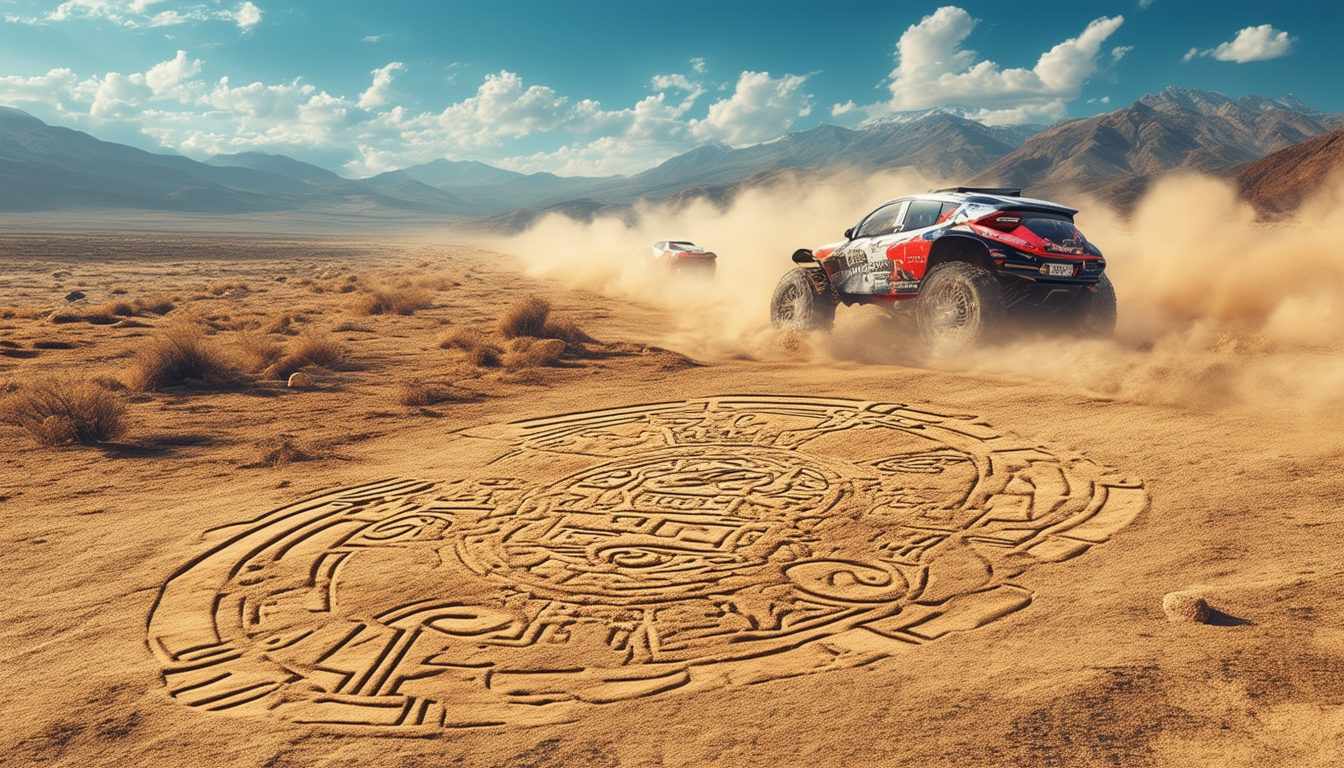Motorsports Devastate Ancient Geoglyphs in Atacama Desert: A 1,000-Year Heritage at Risk

In the breathtaking expanse of the Atacama Desert, ancient geoglyphs etched into the arid landscape stand as a testament to 1,000 years of cultural heritage. However, the vibrant world of motorsports is now posing a grave threat to these irreplaceable artworks. With the influx of off-road vehicles tackling the rugged terrain, the delicate creations of Indigenous groups are increasingly at risk of being erased. Recent reports highlight the concerning impact of both authorized and illegal racing, as tire tracks mar the intricate designs and undermine the historical significance of this UNESCO-recognized site.
Across the stunning landscapes of the Atacama Desert, a troubling issue is emerging as off-road motorsports enthusiasts relentlessly carve pathways through ancient sites. These activities not only compromise the natural beauty of the desert but also put at risk the thousands-year-old geoglyphs created by Indigenous cultures. Recent reports highlight the alarming rate at which these priceless artworks are suffering from the destructive patterns left by both licensed and illegal off-road vehicles.
The Racing Impact on Precious Heritage
The northern Tarapacá region is particularly affected, where vibrant geoglyphs depicting animals, humans, and other elements created around 3,000 years ago are now becoming increasingly vulnerable. As motorcycles and racing cars venture into these areas, their tire marks are not only obscuring but actively erasing these significant cultural landmarks. Reports from the Atacama Desert Foundation reinforce the urgent need for action as many of these geoglyphs face the imminent threat of destruction.
A Tale of Unauthorized Trails
The situation is worsened by the prevalence of unauthorized racing events that draw in large crowds of off-roaders, creating chaos in a place where ancient art stands as a testament to the region’s history. The pathways churned out by these vehicles not only damage the geoglyphs but also contribute to an ongoing cycle of degradation. Each racing season sees an influx of new trails marked across the geoglyphs, further complicating efforts aimed at preservation and conservation.
Environmental Concerns and Cultural Loss
The ramifications of this destruction extend beyond just the physical damage to the artworks. Not only do these actions represent a loss of cultural heritage for the Indigenous communities, but they also pose broader environmental challenges. The rich biodiversity of the Atacama Desert is at risk, as the relentless growth of motorsport activities disrupts fragile ecosystems and diminishes the area’s natural integrity.
The Call for Preservation and Responsibility
Given the escalating damage, calls for a more structured regulation of off-road activities have become increasingly urgent. Conservationists advocate for stricter controls and awareness campaigns aimed at educating enthusiasts about the importance of respecting these ancient creations. It’s crucial for the motorsport community to adopt a responsible approach that prioritizes the protection of historical sites while still enjoying the thrill of off-road adventures.
A Shared Responsibility
In conclusion, the situation in the Atacama Desert illustrates a broader dilemma faced worldwide, where recreational activities clash with the preservation of our planet’s rich heritage. It’s vital that off-roaders recognize their impact and take action to ensure that these ancient geoglyphs endure for future generations. The goal should be to find a harmonious balance between adventure and preservation in one of the planet’s most unique and vulnerable landscapes.
The breathtaking landscapes of the Atacama Desert in Chile are home to a rich history, including remarkable geoglyphs that have stood for thousands of years. However, the growing popularity of off-road motorsports is placing this ancient heritage at serious risk. The tracks left by motorbikes and vehicles are erasing these cultural artifacts, which depict significant elements of indigenous history.
The Impact of Off-Road Racing
Off-road racing in the Atacama Desert is causing alarming damage to the geoglyphs crafted by indigenous communities over 3,000 years. The tire marks from both authorized and unauthorized racing events scar these ancient artworks, threatening to obliterate their intricate designs. It’s crucial for enthusiasts to understand the implications of their recreational activities on such a priceless cultural heritage.
Preserving Cultural Heritage
Preserving the geoglyphs should be a priority for all outdoor enthusiasts. Engaging with local conservation groups can provide valuable insights into how to responsibly enjoy the desert while minimizing impact. Understanding the historical significance of these works is essential for fostering a culture of respect and preservation among sports enthusiasts.
Responsible Off-Road Practices
To protect the vulnerable geoglyphs, off-roaders should adhere to established trails and respect closed areas. Supporting initiatives that promote sustainable tourism can help mitigate the destruction of these ancient sites. Education on responsible riding practices can ensure that the thrill of adventure does not come at the cost of erasing history.
Community Engagement and Awareness
Creating awareness within the motorsports community about the fragile nature of the Atacama’s geoglyphs can lead to more conscientious behavior. Engaging local communities and educating fellow riders can spark a collaborative effort to safeguard these historic landmarks while enjoying the natural beauty of the desert.



